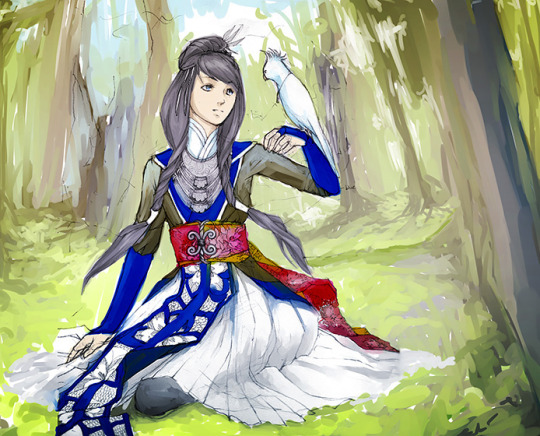Photo

Greetings!
--- BE A PART OF #KAWM ---
We are excited to announce that our 2nd issue will be released this summer! Keep a look out for it! We will be sharing more contents and stories from creative and inspirational individuals!
We are currently accepting submissions! Issue 03, will focus on
---{ ASSEMBLAGE }---
: a collection of people or things that are brought together for a reason or a work of art that is made of different things put together.
Have you been a part of a project and loved it! Worked with a group of people that has inspired, motivated, and challenged you! Share your journey and moments with us!
DEADLINE: JULY 15TH SATURDAY.
--- WHAT WE'RE LOOKING FOR ---
WRITINGS: poetry, prose, creative nonfiction, motivational pieces, narratives, short fiction (500 - 1500 words max)
COMICS
MUSIC REVIEWS & PLAYLIST: any era, any genre (whatever you are loving now and want to share!)
VISUAL ART, PHOTOGRAPHY: if it's art to you, it's art to us
RECIPES: for food, or anything else you wanna brew up
DIY TUTORIALS
INSTAGRAM ACCOUNT: Share with us 10-15 photos that makes you you
PROJECTS: solo, group, collaborations, etc!
AND anything you’ve made and want to share that makes you feel good or feel weird
----EMAIL---
jpegs, docs, pdfs and more to: [email protected]
WHAT IS KAWM?
Kawm is an online magazine created to showcase the variety of talents in our community. Kawm's aim is to create a positive space for the community by promoting culture, dreams, accomplishments, and inspiration by sharing all kinds of works and stories where our readers can share, connect, discover and be inspired.
WHY?
We want to empower our readers to discover and be inspired while networking. This is a place for our readers to read, write and learn about themselves, the Hmong culture, and the community. We want to become a versatile resource that supports aspiring talents while making a positive impact on youths.
---- Check out our first issue! ----
http://www.officialkawm.com/kawm-01
---- Check out our website ----
http://www.officialkawm.com/
--- COPYRIGHTS ---
Your copyright remains your own. The author does not give up their copyright by submitting to Kawm. Your photos will not be used for any other purpose except for publication in the online magazine and the creation of promotional materials.
Feel free to contact us with any additional questions or for input on collaboration! Stacey Lo at [email protected]
We hope to hear from you soon ♥ ♥ ♥
3 notes
·
View notes
Photo

Kawm first issue is coming out soon!
Support Kawm by sharing the great news!
Like Kawm on Facebook & subscribe to Kawm at officialkawm.com.
If you would like to contribute or have any questions,
you can email Kawm at [email protected].
#kawm#hmong#hmoob#kawm magazine#magazine#issue 01#Kawm 01#hmong inspiration#hmong american#hmong culture
2 notes
·
View notes
Note
Nyob zoo ,Koj puas nco qab kuv ?
Hello, Yes I do! Sorry I haven’t respond back to you for a while now. I have been quite busy and I totally forgot all about my tumblr page. How are you? (:
2 notes
·
View notes
Photo

{PLEASE SHARE + REPOST!}
Be feature in #MaivStory an emagazine created to express who you are. We encourage everyone to submit! Share with us your story (big/small), your projects or an interesting fact about yourself! Once you have been selected, we will contact you for more information. Post Away!
HOW TO SUBMIT:
1. Use #MaivStory - the photo must be an original + answer our question.
2. Answer this question - "what are you doing to preserve the #Hmong #culture?" (It can be in the past/present/future)
3. Follow us! Submit your photo(s) via any of the social medias: #Facebook,#Tumblr + #Instagram. (Remember use the hashtag)
*Materials must be PG13. By submitting to us, you are agreeing that you have the rights to the photos/works. For complete details email us at [email protected]
1 note
·
View note
Photo

http://nyti.ms/1SEKx3O
Heirs of the ‘Secret War’ in Laos
By MAI DER VANG
MAY 27, 2015
On the morning of May 14, 1975, in a valley of limestone, sinkholes and caves, the end was drawing near. The discarded possessions of those who had fled were everywhere: suitcases, shoes, wrinkled blouses. This was Long Tieng, a secret military air base established by the Central Intelligence Agency from where it led clandestine operations in Laos during the Vietnam War.
That morning, just as in previous days, thousands of Hmong civilians swarmed the dirt-paved runway, hoping for a miraculous chance to shove their way into a cargo aircraft and evacuate in time. Some clung to the plane as the pilot attempted to taxi, only letting go after the engine roared. Meanwhile, over in the deserted C.I.A. compound, the radios had not even been turned off and machines were still running. Vietnam had already fallen to the Communists and Laos was next.
During the Vietnam War, negotiators in Geneva agreed that Laos would remain neutral. But because the United States feared the spread of communism, the C.I.A. directed a covert operation in Laos known as the Secret War. It recruited Vang Pao, a charismatic, widely respected general, along with tens of thousands of Hmong boys and men, as fighters. For a decade and a half, Gen. Vang Pao and his Hmong guerrillas fought alongside the Americans.
On that chaotic morning, the Secret War came to a jarring end. After a quick extraction followed by decades in exile, General Vang Pao, who died in 2011, never saw his homeland again. Many of his top officials had been evacuated in previous flights, but thousands of people were abandoned on that airstrip, and even more were left behind elsewhere in Laos. Long Tieng, once a stronghold symbolic of the American occupation, was now in ruins.
This month marks 40 years since the fall of Long Tieng and the start of the Hmong exodus from Laos. It marks the desertion of a people left to fend for themselves, with nothing to rebuild their lives. It marks the treachery of the United States government, which went into an unknown country, waged years of war, and then dropped everything in a moment’s notice. It marks a landscape devastated by conflict, with American warplanes dropping enough ordnance on Laos to equal a planeload of bombs every eight minutes, 24 hours a day, for nine years, according to Legacies of War, an organization that works to raise awareness about unexploded ordnance.
General Vang Pao’s flight from Laos prompted tens of thousands to flee. My parents fled with their families on foot, walking for days toward Thailand, plagued by starvation and disease. Not everyone survived. One of my father’s older aunts had been given a gun to carry. When the refugees came upon Communist troops, the soldiers immediately assumed she was a Hmong guerrilla because she was slinging a gun. They killed her on the spot and left her body along the roadside.
The U.S. government had not foreseen that refugees would flood Thailand seeking asylum. When they initially recruited the Hmong, they reportedly agreed to assist them if the war turned disastrous. This promise was fulfilled to General Vang Pao and his high-ranking officials, but not to the rest of the people. Only after years of squatting in camps, along with pressure from the Thai government, did the United States agree to resettle the Hmong.
As a Hmong American, I feel the tremors of war transferred across generations. I know now that while a person can be evacuated from his war-torn country, he can never be evacuated from the trauma. At times, I find my father seated alone in the living room, watching videos from the war, perhaps in an attempt to remember what could have been. My mother, conversely, cannot bear the noise of fireworks on the Fourth of July because they rekindle memories of mortar-bomb explosions.
Today, most Americans know nothing about the Secret War. A classified operation, C.I.A. officials easily terminated the effort when everything went awry. It was a disposable war, intended to look like it never happened. But the presence of the Hmong in the United States, now numbering over 260,000 people, with concentrations in California and Minnesota, is living evidence of its aftermath.
This war and its consequences are now embedded in my identity. I am a child of the diaspora, born the year my parents started a new life in America, symbolizing the years since they left Laos.
I’ve wondered: How does one memorialize a failed war that most people don’t even know about or would rather forget? How will my generation attempt to retain the memories of that war so that future generations will know? What happens when we completely adapt to American culture and lose the narrative of who we are? Even now, I ask more questions than I have answers. But I do know that many of us are innately tied to this trauma as if it were strung into our DNA.
For the Hmong, to retain history and identity means also to retain trauma and loss. I carry the afflictions of this war even though I have never heard a bomb explode or feared my footsteps might trigger a mine. This war is my inheritance.
But I also believe that we must forge a new narrative, one that not only embraces trauma but builds upon it. We must repurpose the wreckage to serve as a reminder of who we are while acknowledging what our elders endured.
It’s been 40 years since General Vang Pao flew off on that May 14th, looking out at the Laotian highlands for the final time. Forty years since the last American plane departed and left behind a war-ravaged people, a land plagued with unexploded ordnance, and a desolate Long Tieng. As we look forward, beyond the loss of our homeland, we must build a fortress of Hmong identity that can withstand the effects of exile and diaspora; one that won’t mourn what could have been, but instead, transforms the trauma into what we can fully be.
Mai Der Vang, a poet and writer from Fresno, California, is co-editor of “How Do I Begin: A Hmong American Literary Anthology.”
http://nyti.ms/1SEKx3O
36 notes
·
View notes
Video
youtube
Tsab Ntawv - Maa Vue
20 years have gone by.
Do you remember that old letter you wrote for yourself?
It’s ready for you to read now. Smile and be happy.
For you are living the life you have always wanted.
Thank you to my twin brother for showing me this. It helped me through today.
36 notes
·
View notes
Photo
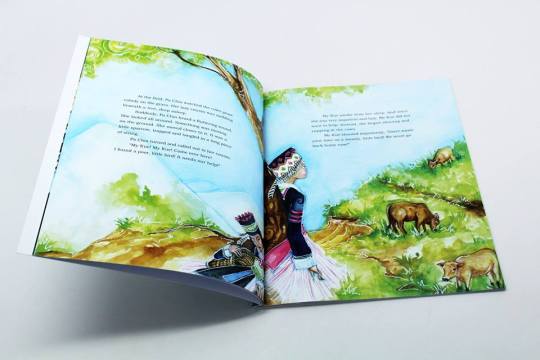
See Lor is the author to the new upcoming children book
"The Forbidden Treasure(Lub Qhov Tsua Nyiaj Qhov Tsua Kub)"
an inspired Hmong folktale that teaches about kindness, humbleness, and greed. By creating Reading Karma, Lor hopes to produce interesting and meaningful literature to reflect the culture and history of young readers. Her books are written in English and Hmong to help preserve and sustain the Hmong culture, history and language for future generations.
Visit her website for more information and pre-ordering: www.readingkarma.com
#see lor#hmong artist#hmong writer#hmong folktales#hmong#kawm#kawm-tolearn#kawmhmong#reading karma#reading#karma#folktales#kao lee thao
1 note
·
View note
Photo

The older generations of the Hmong people often say that the younger ones are forgetting their culture. They often criticize that we are not preserving it and because of that, we will forget about our culture and background. However, I disagree with this and I believe we, the younger generation of Hmong, are still doing our part in preserving our culture. We are just doing it differently.
By Kao Lee
#hmong#hmoob#hmong culture#preserve hmong culture#kawm#kawm-tolearn#kawmhmong#hmong american#generation#kao lee#hmong heritage#age gap#we must learn how to be hmong american#mvlasuro
19 notes
·
View notes
Link
“As a Hmong American, my honest say is that the younger Hmong generations are not losing our culture but we are simply preserving it differently.”
Kao Lee
1 note
·
View note
Photo
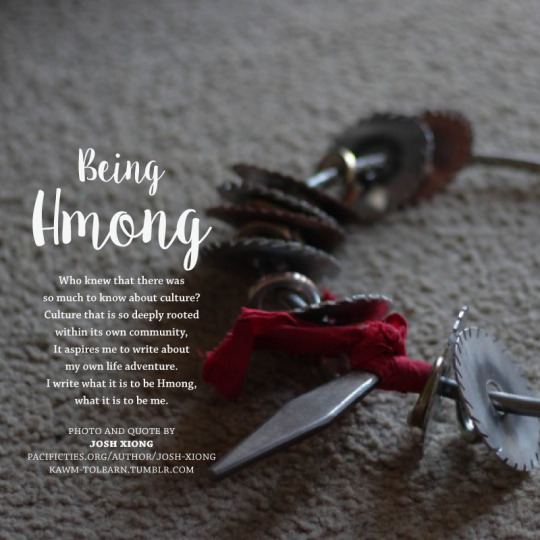
Who knew that there was so much to know about culture?
Culture that is so deeply rooted within its own community,
It aspires me to write about my own life adventure.
I write what it is to be Hmong, what it is to be me.
Photo and Quote by
Josh Xiong
Read more of his stuff here.
#josh xiong#hmong#hmoob#kawm#kawm-tolearn#kawmhmong#hmong culture#hmong life#culture#joshxiong#pacificties#write hmong#write#writing#photography#mvlasuro
5 notes
·
View notes
Link
1 note
·
View note
Photo

“Coming off the Metal Bird” is documentation as well as biographical work, what it is like to be in the midst of dueling power cultures. It was hard to live two lives- trying to understand what its like to be American and Hmong American. It is about the duality of two cultures and how it affects me as a person. READ MORE HERE.
#kawm#kawm-tolearn#hmong#hmoob#hmong artist#hmong photographer#inspiration#visual artist#hmong american#metal bird#culture#paohouaher#paohoua her#photographer#mvlasuro
0 notes
Photo
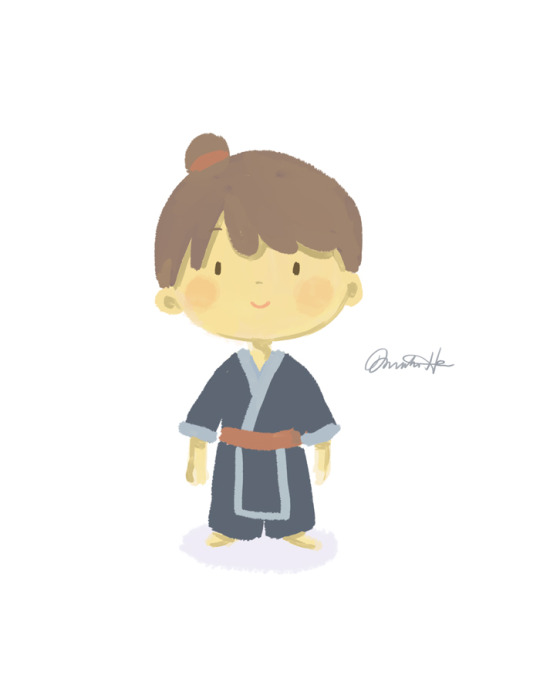
Sketch 9-17-15
5 notes
·
View notes
Photo


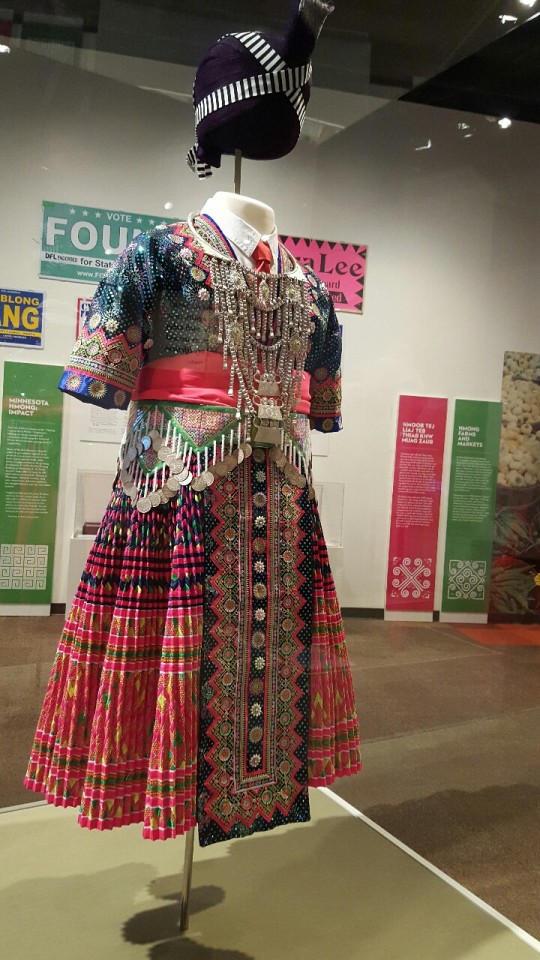
An awesome Hmong outfit on display. For sure an outfit this colorful and ornamental is worn at celebrations, like the Hmong New Year for instance.
A full outfit like this consists of many singular parts.
-under dress shirt
-outer, decorated blouse
-embroidered skirt
-the front “apron” which is also embroided with beads
-the money belt
-the bright colored (usually pink/red/green) sash around the waist
-silver, necklace like ornament (can get pretty heavy)
-type of hat, this style is made from a length of purple cloth, wrapped and sewn on the hat’s shell and accented with the striped cloth.
The embroidery on this outfit was amazing! The skirt must have been a lot of work.
4 notes
·
View notes
Photo

#redumbrellashop #shopsmall #handmade #screenprinted #hmong #hmoob
3 notes
·
View notes
Photo
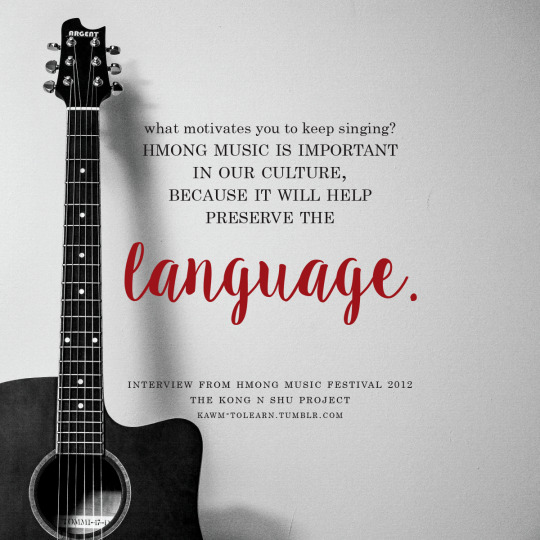
what motivates you to keep singing?
“Hmong music is important in our culture, because it will help preserve the language.”
-Interview from Hmong Music Festival 2012
THE KONG AND SHU PROJECT
#kawm#kawm-tolearn#mvlasuro#Hmong#hmoob#hmong singers#hmong artists#hmong language#preserve hmong#HMF 2012#Hmong Music Festival#Kong and Shu Project#Kong and Shu#Hmong Music
0 notes
